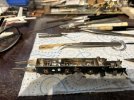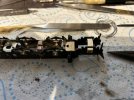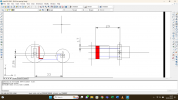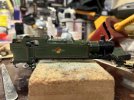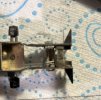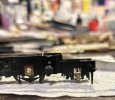Hi, imho that sound can enhance models, however...
Firstly, with steam locomotives, it takes time and effort to synchronise the chuffs to the wheel rotations, especially bearing in mind 2, 3 and 4 cylinder locomotives. Nothing more annying than listening to the chuffs with the wheels totally out of synch!
Secondly, don't make the sounsds too loud! Safety valves blowing off, steam cocks, blowers are fine, even shovelling noises, but not so they can be heard a scale mile away! Come to think of it, shovelling noises are a bit pointless unless you're stood in the cab! I also get annoyed by flange squeal and coupling noise! Unless the loco is running light engine most, if not all, the vehicles in the train will squeal at one, or more points, in the track. Same with coupling noises, should be at different parts of the train, not just behind the tender or diesel cab. At least diesls and electrics don't need the chuff synchronisation! And don't get me started about guards' whistles, door slams, station announcemnts etc!
There is nothing worse than enjoying a layout, complete with decent, and not too loud, sounds at an exbition then you hear another layout maybe a dozen or more metres away! At least you can control the sound on Youtube! So, if you're prepared to make the effort, especially regarding any kitbuilt or earlier models that were not initially intended for simple dcc, let alone sound, then go for it! If not, just keep to basic dcc.
Roja


